
This week marks one year since I launched my webcomic Neat Hobby. A full 52 strips, once a week, never missing a week! Rather than celebrate by getting hammered on cheap bubbly, I thought I'd take this opportunity to write up a retrospective of my first year as a Newbie Webcomic Person. Be warned: this longish post contains much introspection and navel-gazing, as is the way of my people.
Getting Started
Getting ready to launch a new personal project that is by far the most ridiculous and age-inappropriate thing I've done, probably ever. 0_o
— Scott Andrew (@scottandrew) September 1, 2014
Music has been my primary creative outlet for most of my adult life. But when I was a kid, I drew comics and consumed books full of Peanuts, Bloom Country and Scrooge McDuck strips. As the bassist for Kirby Krackle I get to go to a lot of comic cons and be exposed to tons of artists all hustling and doing their thing. Just being around all those happy mutants started messing with my head, like I'd forgotten to do something my entire life.
I spent months doodling in a sketchbook before I launched Neat Hobby. I wasn't sure what form this comic would take. I already knew I wanted to do some serial adventure thing as I'd conceived HTMLOSPHERE a full year before. Basically I wanted to emulate my favorite webcomics that did one-off joke strips but also had absurd fictional worlds to set stories in. The internet offers an endless supply of outrage so there's no lack of timely topics to riff on.
I launched Neat Hobby in secret because I was embarrassed. Who's this fortysomething dude drawing a comic on his lunchbreak? I even kept it from my wife for awhile, who only learned about it when she asked me what the hell I was doing with a sketchbook during TV time.
So I launched Neat Hobby with no announcement and let all my friends and family catch on.
Tools

Notes on some of the gear I chose.
A sketchbook
I still use a sketchbook although the final artwork is all digital. Sometimes I'll sketch on the tablet (see below) but in general it's nice to have an option that doesn't require lugging an AC charger around and worrying that someone might nab your pricey gear. Below are some rough layouts I did early on.
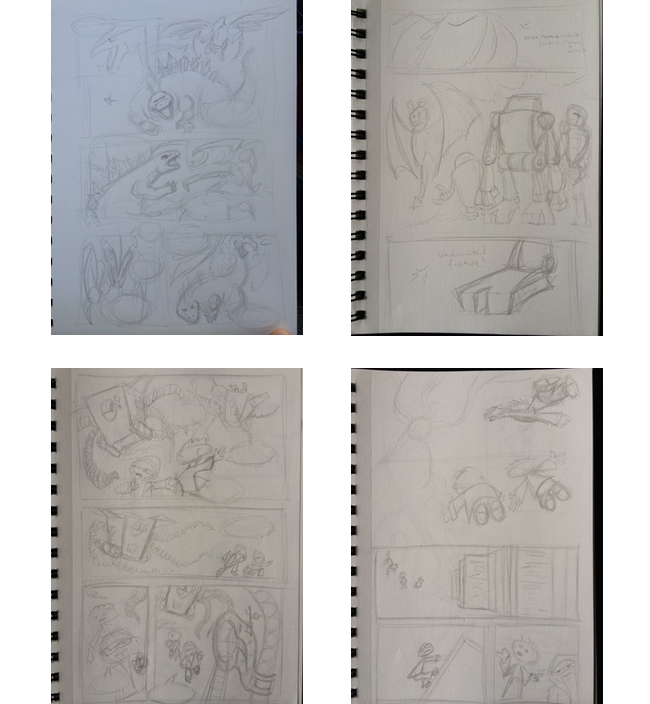
Tablet computer
I had a few hard requirements for a tablet. One: it had to run the drawing software itself. I didn't want to be dragging a laptop AND a tablet peripheral everywhere. This ruled out most of the Wacom and Wacom-style plug-in tablets.
Two: it had to be cheap enough that I wouldn't feel like I wasted a ton of money if I gave up. This meant it had to be a tablet computer, which you might think puts this requirement in conflict with itself. Not so! Read on...
I tried really hard to make an iPad work. But the iPad is simply not good enough for drawing, at least at the level of detail I required. The iPad screen is made for fat squishy fingertips, and at the time no stylus even came close to the kind of precision I wanted.
The Wacom Cintiq Companion looked perfect. It's a Windows tablet that you can also plug into a Mac or PC. It starts at US$2000. Yeah, I don't think so.
I finally settled on a refurbished, first-generation Microsoft Surface Pro. I comes with a pen, which you can easily swap out for a better one. I got mine for just under $400. It runs Windows 8.1 so it can run just about any modern software. A little while later I purchased a TypeCover so I could write text more easily.
A note about tablet computers:
I set up my Surface to install updates automatically. There are people who loathe and avoid automatic software updates because sometimes updates change something they've become accustomed to, like how the Start button works or whatever. Don't be one of these people. If you skip updates you're not getting security patches.
Also: don't use your drawing tablet for anything except drawing. For god's sake, don't ever use it to open email attachments. Don't use virtual folders like Google Drive or Dropbox from your desktop. They're super-convenient, which means they're super-easy to infect. The last thing you want is for something like Cryptolocker to lock up all your files, including your backups. Upload your art with a secure FTP program or a web interface.
Don't use it for online banking or shopping. Don't install anything that's going to take up CPU while you're trying to draw.
Okay? Moving on.
Software
I tried out a ton of drawing software. Here's a capsule review of each:
Sketchbook Pro: moderately priced and a great for drawing. The user interface is nicely designed for pen tablets. Newest versions require a subscription. Unfortunately it doesn't have a lot in the way of comics-specific tools.
The GIMP: the classic, free, open-source graphics program. Tons of features if you can find them. The interface is maddeningly not designed for tablets. Like a lot of open-source software I've used, there are far too many menus full of indecipherable options.
ArtRage: neat brushes, couldn't handle the file sizes I needed without staggering to a crawl.
Photoshop: I didn't even try. Too expensive, too many complaints about the "cloud" features from artists I trust.
Pixelmator: great price and tons of Photoshop-like features. Not available for Windows, so no-go for me.
Manga Studio: this is what I ultimately settled on. It has the best tools for drawing comics: frames that acted as layer folders, cool word balloon tools, a ton of rulers, etc. The only downside is poor text handling. The downloadable version of Manga Studio is called Clip Studio Paint.
Website and social media
I'm old school, so I decided to build and host my own website for Neat Hobby. Tons of artists use Tumblr for their webcomics, which is cool, but I get nervous building anything on a platform I'm not paying money for. Tumblr is also owned by Yahoo!, which makes me extra nervous as they could pull the plug on Tumblr any time they decide to get out of the blog hosting business.
However, there's a ton of readers on Tumblr, which is why I decided to build a Tumblr mirror site. I also have a Twitter, Facebook page and Instagram for Neat Hobby. I can update all of these accounts from my phone in a few minutes. Add an email list and I feel I've got most of the big outlets covered without going insane keeping everything updated. And if one service goes belly-up I still have my own website.
Metrics and money!
Metrics? I don't have them. I have no idea how many people read my comic and I prefer it that way.
Why? When I was doing lots of music I measured everything -- page views, song plays, YouTube plays, Google Ads money, you name it. Each of these is represented by a line on a graph, ideally moving up and to the right. It's very easy to become obsessed with those lines. At one point I was spending more time trying to make those lines move than writing good songs. That was basically where my efforts in music started going off the rails. I wasn't doing the things that were necessary to create a body of work -- the songs.
I didn't want this to distract me when I started Neat Hobby, so I don't measure anything. I don't want to become obsessed over why one comic flopped while another had a ton of hits. I want my motivation to come from a desire to draw, not moving some conceptual needle.
Neat Hobby makes no money because I am unwilling to do the things that make webcomics money. So no ads, Neat Hobby merch, no Kickstarter, etc. One day I'll probably want to see Neat Hobby make some cash, but for now I want to concentrate on making comics, not designing mugs or t-shirts just yet. One day, but not yet.
No, REALLY Getting Started

Quality, Content and Timing
I knew that my art was going to suck at the beginning and there was no way around this. I decided early on that I wasn't going to wait until I was "good enough" at drawing before launching because "good enough" is a lie from the pit of hell. Tons of talented people die waiting around to be "good enough." I was simply going to start and do the best work I could at that point.
Some webcomic creators have a strict publishing schedule. I know repetition builds audience confidence, but screw that. I made it easier by promising myself I would publish once a week. It didn't matter which day, so long as something went public each week. That way I gave myself plenty of slack in case life got in the way, which it often did.
I also decided I wasn't going to worry if everyone didn't get the jokes. I wasn't going to try to be universal -- that's what Garfield is for. Some strips were going to be built around in-jokes about web development, video games, old and new pop culture references and if some people didn't understand, that's alright, there'd be a new strip next week.
I'm convinced that had I not established these loose rules, I'd never have completed a full year of Neat Hobby.
Progress!
I did the earliest strips using as many cheats and shortcuts as I could. I didn't spend much time designing these characters. I just knew that I wanted to be able to draw them quickly so I kept them simple. Although it wouldn't be published for many months after the launch, HTMLOSPHERE Part 1 is the first Neat Hobby strip I drew. Look closely at the left-side image and you'll see the heads are perfect ellipses -- that's because I relied on shape tools to bang these out.

Eventually I started drawing more freehand shapes, which IMO look far better. I even started drawing the word balloons freehand, preferring the rough look over the perfect ellipses which didn't always fit the text shape. Because years of keyboard use has made my handwriting atrocious, I use the awesome free Blambot! fonts for lettering.
Later on I started making consistent decisions about character designs. I deliberately gave the characters noodle-like arms with no joints, no shoulders, with full sleeves to the wrist. Early strips have elbows and mid-length sleeves, which just looked awkward and inconsistent. Heads are never shown in profile; they're mostly cheated toward the "camera" although sometimes they're looking straight at it (or 180 degrees away from it). Having design rules make it way easier for me to draw things quickly.
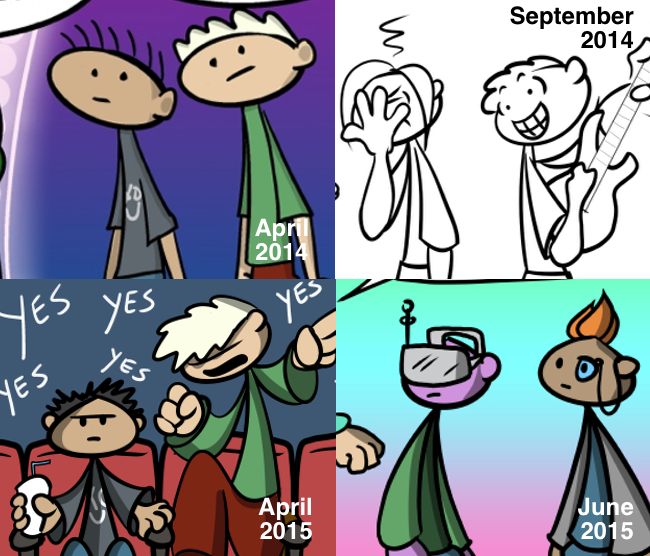
Later I added some women characters and struggled to make them look like women and not just male characters with eyelashes and hair bows. Eventually I got brave enough to give them breasts!
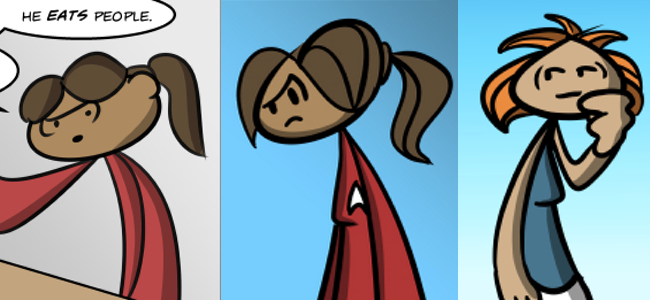
These next two examples show the same character in roughly the same pose, but the one on the left was drawn sixteen months before the one on the right. So you can see how the art is improving with time.

Favorites, Highlights and Milestones

Here's a short roundup of what I consider significant strips from Neat Hobby's first year.
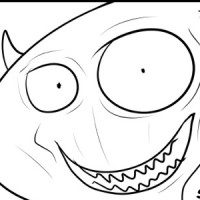 Doing The Work. The first strip published, and holds a special place in my heart. The Steven Pressfield quote is something I truly believe: we are our own saboteurs.
Doing The Work. The first strip published, and holds a special place in my heart. The Steven Pressfield quote is something I truly believe: we are our own saboteurs.
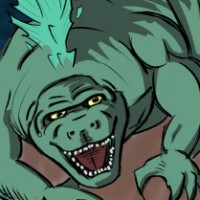 The Eternal Battle The first color Neat Hobby strip and the first one where I tried to push my art skills.
The Eternal Battle The first color Neat Hobby strip and the first one where I tried to push my art skills.
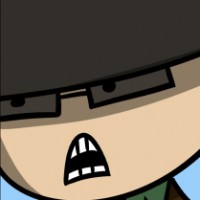 Baiting Bad: Part 2. The first serial storyline on Neat Hobby, a three-part riff on what Breaking Bad would be like if Walter was an SEO expert. I mostly like this for the layout and for the excuse to use the word "Heisenblurb."
Baiting Bad: Part 2. The first serial storyline on Neat Hobby, a three-part riff on what Breaking Bad would be like if Walter was an SEO expert. I mostly like this for the layout and for the excuse to use the word "Heisenblurb."
 Goodnight. I wanted to do something graphic novel-y and less cartoon-y for a Halloween special. I struggled a lot with the furniture, lighting, and keeping the kid's facial features consistent from panel to panel.
Goodnight. I wanted to do something graphic novel-y and less cartoon-y for a Halloween special. I struggled a lot with the furniture, lighting, and keeping the kid's facial features consistent from panel to panel.
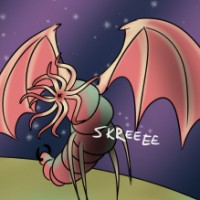 The Stars Are Right. A Lovecraft-and-Cosmos mashup featuring a cartoon Neil DeGrasse Tyson! It got a second life when the Charon fly-by happened this summer.
The Stars Are Right. A Lovecraft-and-Cosmos mashup featuring a cartoon Neil DeGrasse Tyson! It got a second life when the Charon fly-by happened this summer.
 The Tech Support Elf. The art was finally starting to work and I had fun composing the poem. Plus, my parents liked this one.
The Tech Support Elf. The art was finally starting to work and I had fun composing the poem. Plus, my parents liked this one.
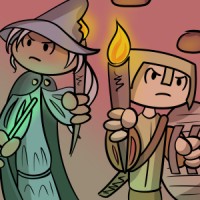 Ready Player Dumb. Both an excuse to complain about the book's popularity (this generation's Snow Crash? HELL to tha NO) and to draw the most famous part of the most famous dungeon crawl.
Ready Player Dumb. Both an excuse to complain about the book's popularity (this generation's Snow Crash? HELL to tha NO) and to draw the most famous part of the most famous dungeon crawl.
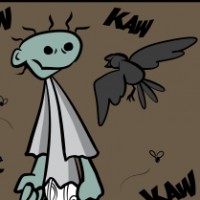 Apocalypse Meh. What if the zombies came and it was NBD? Adapted from an unfinished short story.
Apocalypse Meh. What if the zombies came and it was NBD? Adapted from an unfinished short story.
 The Phantom Zone. A personal favorite I was sure was gonna go viral, but did exactly the opposite. C'mon!
The Phantom Zone. A personal favorite I was sure was gonna go viral, but did exactly the opposite. C'mon!
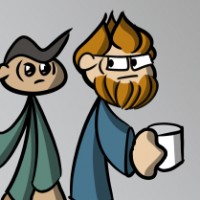 Come As You Are. Hey, I'm just saying what all Gen Xers are thinking. My second most-popular strip, based on scant evidence.
Come As You Are. Hey, I'm just saying what all Gen Xers are thinking. My second most-popular strip, based on scant evidence.
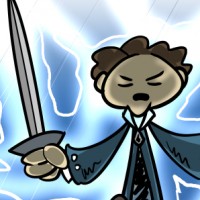 Austenland 2: The Quickening. A Highlander/Pride and Prejudice mashup. Only later did I realize I should have titled it "Austenlander." This one blew up on Tumblr a little bit.
Austenland 2: The Quickening. A Highlander/Pride and Prejudice mashup. Only later did I realize I should have titled it "Austenlander." This one blew up on Tumblr a little bit.
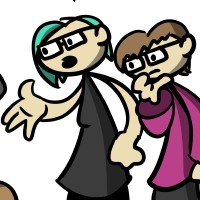 Which was my most popular strip of 2014-15? Remember, I don't measure web traffic, but based on opaque numbers from Facebook and Twitter, it was probably The Doubleclicks Mystery Team, no doubt aided by generous retweets from the Doubleclicks themselves and their fans.
Which was my most popular strip of 2014-15? Remember, I don't measure web traffic, but based on opaque numbers from Facebook and Twitter, it was probably The Doubleclicks Mystery Team, no doubt aided by generous retweets from the Doubleclicks themselves and their fans.
What I've Learned

I don't feel that qualified to give advice on webcomic-ing, as I've only managed to do it for a year. But I'll share with you some Things I Believe Are True.
Don't wait to be good. If I waited until I thought I was good enough to start a webcomic, there'd be nothing for you to see here. Start now and get better along the way. You cannot avoid sucking at the beginning, and people who claim otherwise are LIARS. I figure if I do the best work I can at the level I'm at, I'll eventually level up.
Starting doesn't get easier. Every strip I publish is a personal victory, and not a single one makes starting the next strip any easier. I'll use every excuse to avoid confronting the blank page (or screen) even if I know exactly what I'm planning to draw -- because surely this time is when I'll discover how terrible I am, how little people care, how pointless this venture is, I'm just sure of it. Don't listen. Do the work.
Know what you won't do (and be okay with that). There are no "must-dos." Give the finger to people who say otherwise. You do not have to keep a rigid schedule, you do not have to measure every page hit, you do not have to do anything. Do what you enjoy doing, and ignore (or outsource!) anything you dislike or just suck at doing.
There's room for everyone. Most of the webcomics I enjoy have been running for over a decade. Tumblr is overstuffed with all kinds of crazy wackadoodle comics. None of these facts prevented me from launching my own. There is no such thing as "too many" of anything when it comes to makers. There can never be too many artists, writers, painters, dancers, actors, et al.
What I Haven't Figured Out Yet
Where the hell is this going? Not just Neat Hobby, but all of webcomics in general? Where do webcomics fit into a world of Vine stars and messaging apps, where people's attention is getting more siloed and centralized? Will Patreon/Kickstarter still be a thing in five years? I feel decades late to this party.
Getting new readers is super tough! As I said, I don't measure readership, but I suspect it's very small. My guess is that most people simply aren't searching for new comics to follow, relying instead on recommendations -- e.g. shares, likes and passing mentions from friends and webcomic authors they already follow. My plan so far has been to just keep making strips and maybe a few of them will hit big.
How can I increase my output? I've got a ton of ideas for strips, plus a graphic novel-style adventure comic I'm working on, but I also work a full-time job and play in a bunch of bands. I've made it work so far on the once-a-week schedule but I worry about being hit by a bus or an asteroid before I can complete everything I want to. Not sleeping isn't an option, nor is speed (the amphetamine kind).
Thank You

I don't know if you read Neat Hobby, but if you do, thank you! And if you don't, I hope you'll check it out. And thank you if you've ever shared one of my strips. I really, truly appreciate it.
So here we are, at the end of a year. That didn't seem so hard. Let's meet back here again next year and see where we are.
Give it another ten minutes. See what happens.
